The Buoyant Foundation Project research group recently took 3rd place in an international disaster resilience design competition. Their entry consisted of four retrofitted amphibious homes in rural Vietnam.
Amphibious Homes for the Vulnerable: Retrofitting Existing Homes in the Mekong Delta for Flood Resilience and Climate Adaptation
Waterloo Associate Professor Elizabeth English, alumna Teresa Tran, and undergraduate student Thanh Tran; with An Giang University’s Pham Duy Tien and Nguyen Van Truoc
3rd place in Building 4Humanity Design Competition

Context
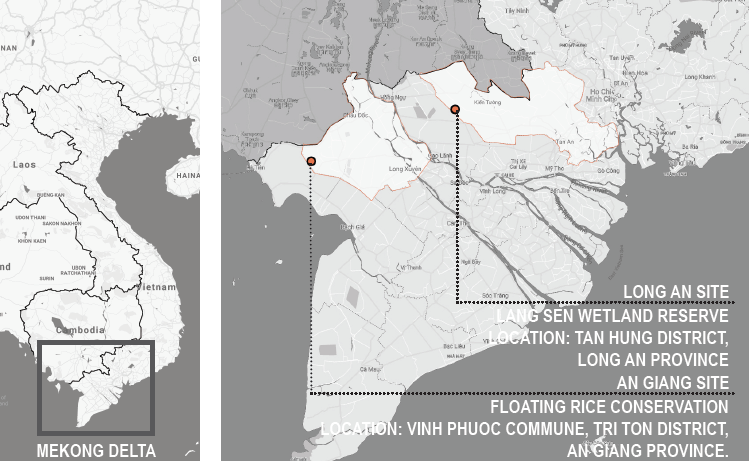
Vietnam’s Mekong Delta is home to 17 million people (22% of the national population), most of whom are agricultural and aquacultural farmers. The Delta is comprised largely of wetlands, which contribute 52% of the national rice production and 60% of the national fisheries and aquaculture production. Food produced in this region is also exported to other areas of Southeast Asia.
Traditionally, houses in the region are raised above ground to mitigate property damage during flood events. However, as the area anticipates increasingly severe floods, the current level of static elevation of these houses may no longer be adequate to protect residents and their property. Rebuilding or repairing homes after a flood event is costly and can require a lengthy period of time. During these repairs, residents are often displaced from their homes, increasing their economic burden and vulnerability.

Typical Mekong Delta housing along a flooded rice field
Site
Two houses are located at the Floating Rice Conservation Area Site in An Giang province, while the other two are on the Lang Sen Wetland Reserve Site in Long An province.

Approach

In order to preserve residents’ connection to their land and livelihoods, a passive climate change adaptation and flood mitigation technique can be implemented, allowing the land in the Delta to benefit from the seasonal flooding. Low-cost amphibious retrofits to existing houses can provide a solution to these vulnerable populations, allowing residents to remain on their farmland during flood events with little or no danger to their families or damage to their homes and belongings. Amphibious construction works in synchrony with a floodprone region’s natural cycles of flooding, rather than attempting to control them.
Local carpenters are taught how to implement amphibious retrofits themselves using locally familiar carpentry skills and construction techniques. The training program developed by our team will provide local communities with a stronger knowledge base and allow them to diversify their skillsets. It can be extended throughout the Mekong Delta, supporting a community-based bottom-up approach to flood risk reduction and climate change adaptation.
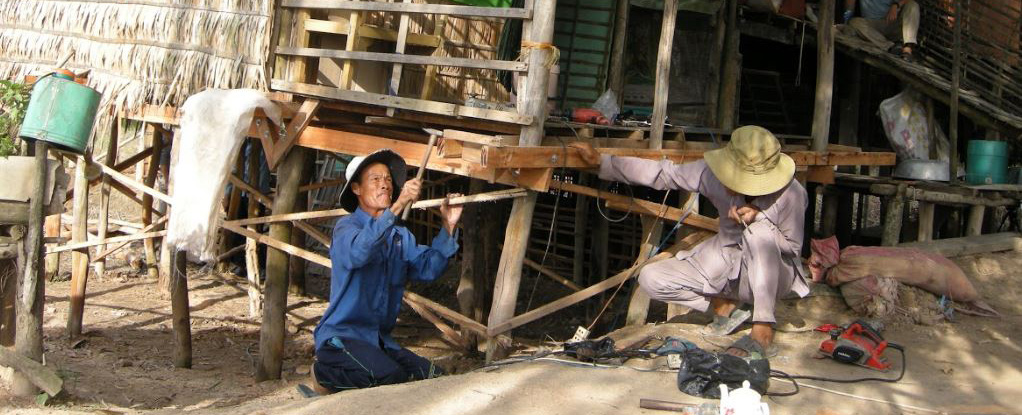
Retrofitting with local carpenters
Process
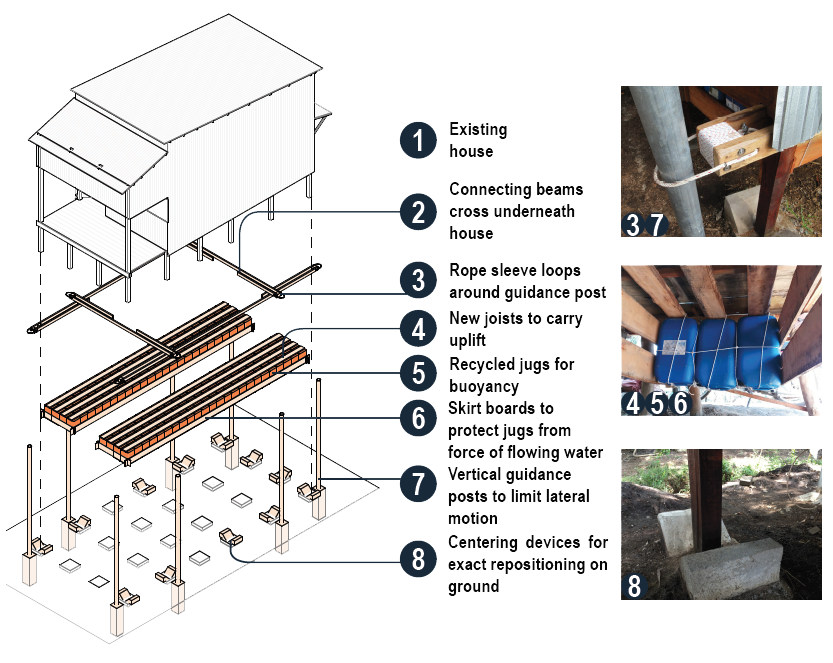
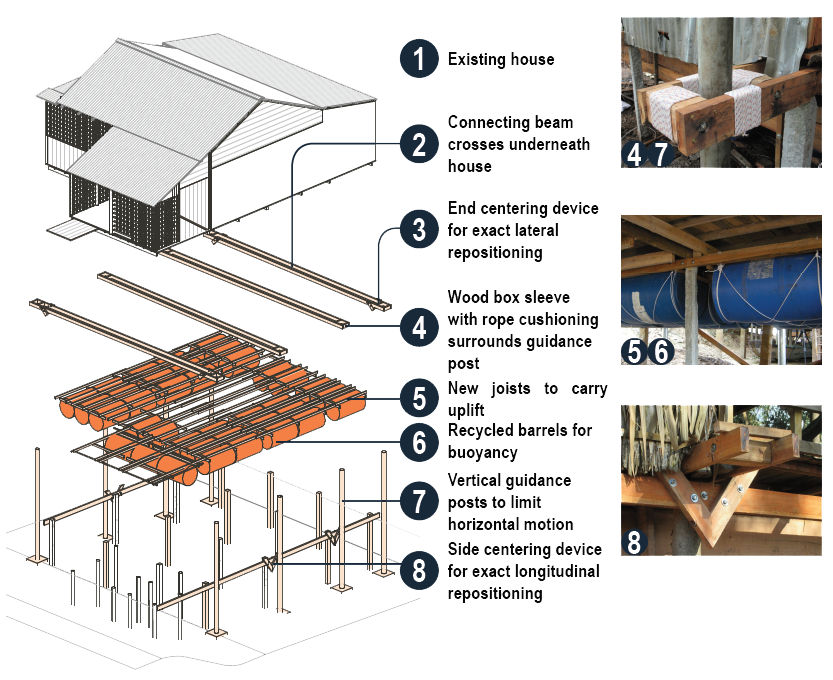
Implementation
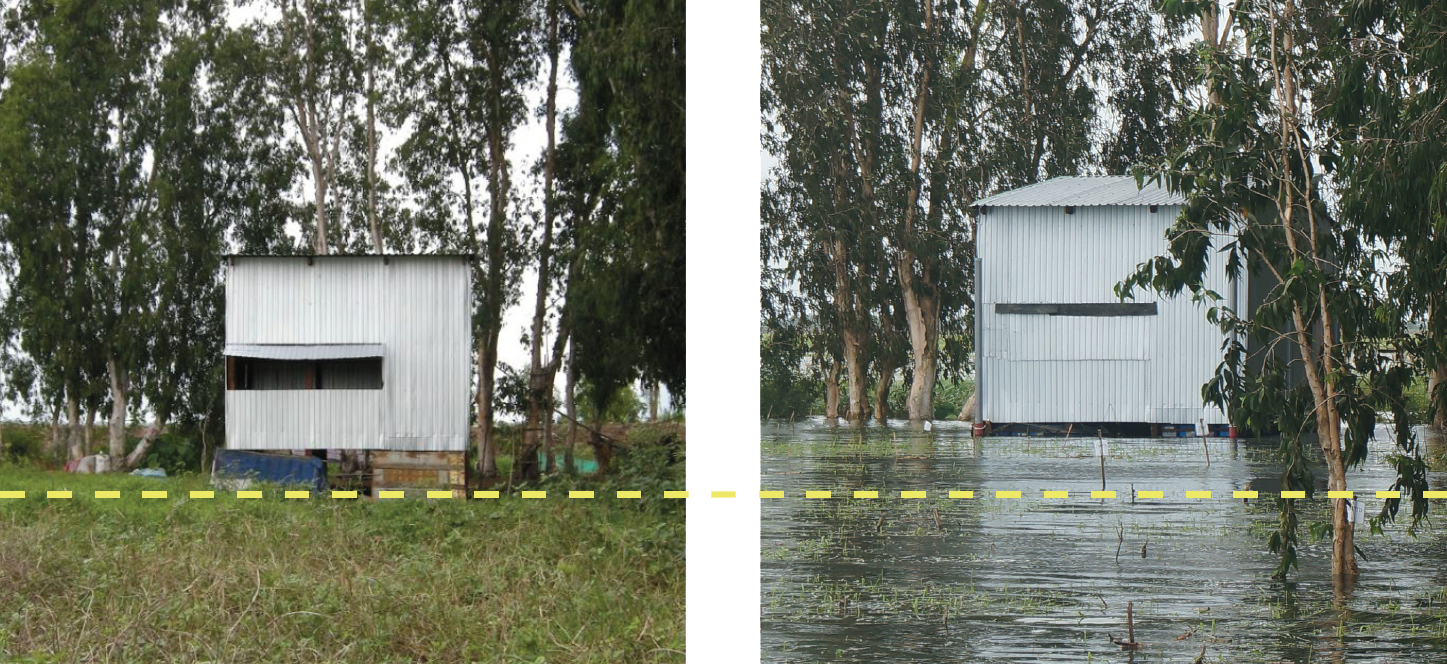
Rear elevation of the retrofitted amphibious home in An Giang province, during dry (left) and flood (right) conditions
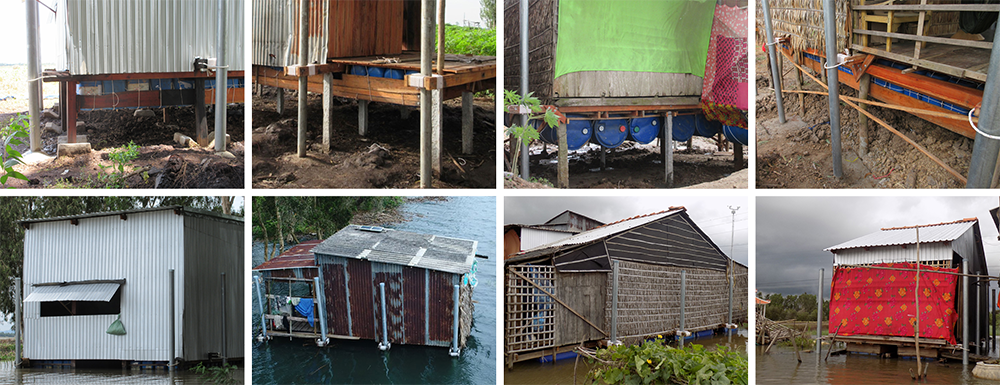
Amphibious retrofits (above) and the amphibiated houses floating on floodwater (below)
The competition panels can be accessed here.




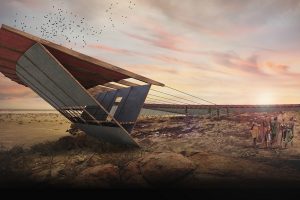
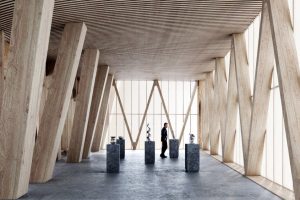
Leave a Reply